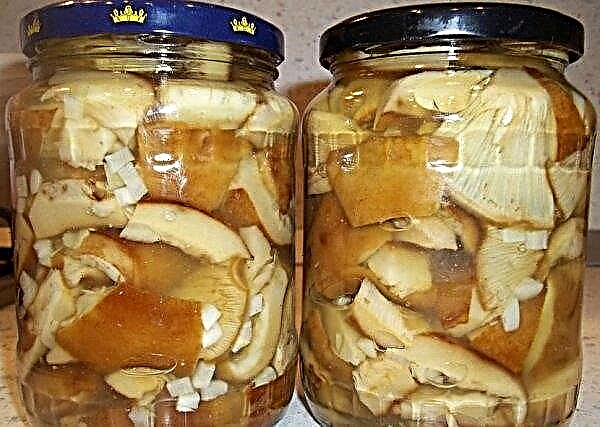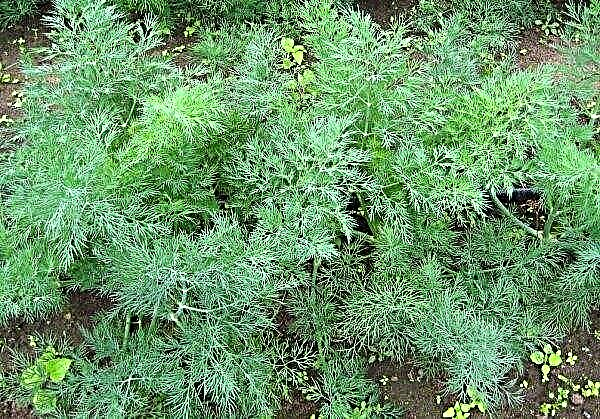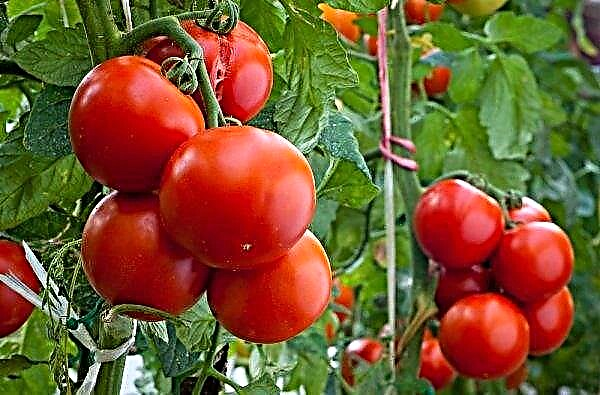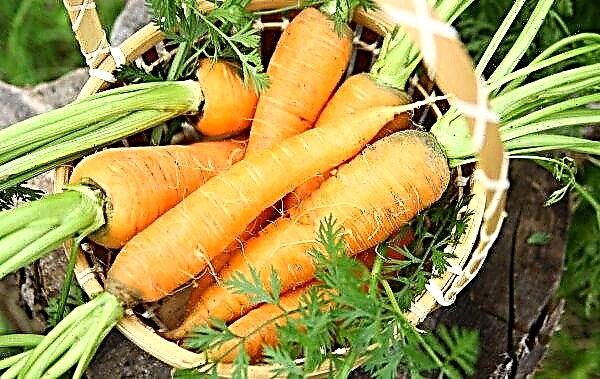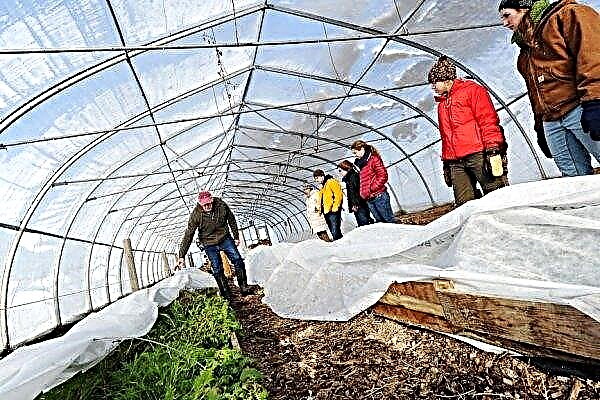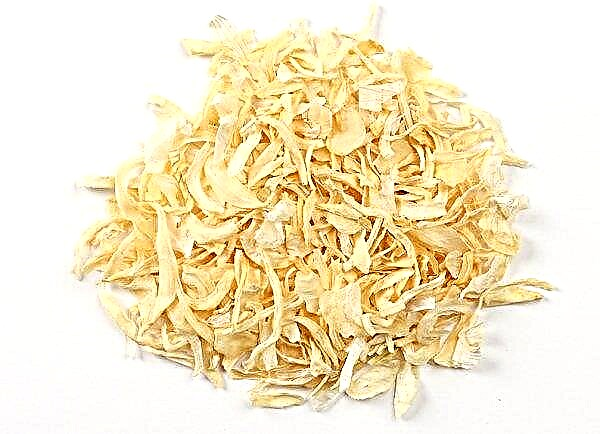Resistant to various diseases, highly productive geese of the breed Linda are deservedly popular among breeders. The bird is characterized by a rapid mass gain, unpretentious in care, has high adaptive abilities.
Breed description
The breed of geese Linda was bred in the Nizhny Novgorod region by crossing:
- Chinese
- Arzamas
- Solnogorsk
- Adler’s geese.
Did you know? More than half of all geese in the Russian Federation belong to this breed.
Lind geese belong to the heavy breed of meat direction. Birds are omnivorous and not demanding in care. Well take root even in the coldest regions. The survival rate of young animals is 80–90%, depending on the conditions of detention. Thanks to breeding, the breed is characterized by early maturity. Young growth can be sent for slaughter at the age of 4–5 months, which increases the profitability of poultry maintenance. There are 2 varieties of Lindovian geese:
There are 2 varieties of Lindovian geese:
- Linda is gray;
- Linda is white.
External characteristics
Geese of the breed Linda white have attractive external characteristics:
| Head | proportionately folded, large, with a characteristic bump on the forehead |
| Neck | powerful, thick, long, with a beautiful bend |
| Torso | elongated |
| Chest | broad, round, with pronounced muscles |
| Legs | muscular, wide set, medium length |
| Paw | large, round, orange |
| Plumage color | predominantly white, individuals with partially gray plumage of the back are found |
Productive qualities
Along with the high rate of muscle building, Lindov geese produce many eggs, which is not characteristic of other meat breeds. In addition to meat and eggs, poultry is a valuable source of fluff, which is equal in quality to swan. Meat products do not lose their qualities even after freezing, which makes it especially valuable.
Egg production
The peak egg production occurs in the spring. Females reach sexual maturity at 6 months. The main thing is to create favorable conditions for the birds and organize a balanced diet when they begin to lay eggs. Then for 3 months. you can get 1 egg a day weighing 140–170 g.
Did you know? The yolk of a goose egg contains a rare antioxidant, luten, which helps restore damaged cells. Its regular consumption helps rejuvenate the body and slow down the aging process.
Weight
Already in 4 months. a Lindovian gosling weighs 5 kg. Mature males weigh 8–9 kg, females weigh an average of 6.5–7 kg. Under good conditions, gander grow up to 11 kg. The meat is distinguished by high palatability and contains a large amount of nutrients.
Character
The bird has a calm disposition and gets along well with other representatives of the farm. Lindovskie geese calmly behave at night, and during the day they move around the territory in search of food or sit in the sun at a watering hole.
How to distinguish a goose from a gander
Sexual characteristics in adults of the Lindov breed are determined by external data and behavior:
- males are much larger than females;
- the male’s neck is thicker and longer, and the head is much larger than that of the female;
- females are calmer and slower;
- during swimming, the male’s neck is stretched upwards, and the female holds her head horizontally to the water column.
Did you know? 24 hours after birth, goslings are already able to swim freely.
To distinguish the chicks by gender allows the study of reproductive organs:
- The chicks are picked up and their head thrown back.
- The tail is bent down, with the thumb and forefinger open the cloaca.
- With a gentle movement, they press on the knee region to see the internal cavity.
- The male in the center will have a small pink process - the genital organ.
Video: distinguishing a gander from a goose
Pros and cons of the breed
Highly productive Lindovian geese adapt well to environmental conditions. Due to its high productivity, the bird is often used for commercial purposes and in the improvement of other breeds.
- The main advantages of the breed:
- precocity
- omnivorous;
- high egg production;
- good survival of young animals;
- quick adaptation to any living conditions;
- calm disposition;
- cost-effective breeding.
- Among the shortcomings are noted:
- low resistance to hymenolepidosis;
- spring vitamin deficiency;
- decrease in productivity in the absence of a reservoir.
Growing Features
The main task of the farmer is the organization of an artificial reservoir and a large walking area. If the Lindov geese do not have the opportunity to swim periodically, a decrease in immunity, a drop in egg production, and a decrease in the quality of down are observed.
Nutrition
Adults are not at all picky about food and eat everything. Regarding the chicks in the first 2 months. will have to tinker, because during this period the bird is often exposed to infectious intestinal diseases. To avoid problems with spring vitamin deficiency, pre-purchase mineral supplements.
Important! If broiler feed is present in the diet, additional mineral supplements are not necessary. They are already included in the required volume in the feed.
Young animals
From birth to 7 days, goslings are given boiled, chopped chicken eggs and cottage cheese. From the first week, millet and starter feed for broiler chickens are gradually introduced. Then a month is fed with a grower and 2 months with a finisher. For 4 months on this fattening, the gander gains 4–5 kg. Already from the 4th month. cereals are introduced into the diet.
Adults
Adult goose diet includes:
- succulent greens;
- chicken feed for broilers;
- wheat, corn;
- fruits, root crops, gourds;
- phosphorus, salt, calcium.
Content
Lindovsky geese are large in size, so they need an extensive house. The room needs to be equipped with drinking bowls, feeders and nests. The large crowding of geese in a small area leads to the spread of infectious diseases.
In the summer, it is enough to fence the poultry yard with a netting net 2.5–3 m high and equip the feeders. The first 45 days, the follow-up scheme should be observed:
- 10 days - 24 hours;
- 10-20 days - 16 hours;
- 20–45 days - 14 hours.
 After birth, young animals are kept indoors for the first 45 days, then they begin to be taken for grazing.
After birth, young animals are kept indoors for the first 45 days, then they begin to be taken for grazing.Winter content
For winter keeping, you will need a house. The size of the room is calculated in accordance with the number of birds. For 1 goose, you need to allocate at least 1.5 square meters. m. It is advisable to use hopper feeders and a drip system for evaporation. High frost resistance allows keeping geese in non-insulated houses.
For every 3-4 geese, you will need 1 nest 40 x 60 x 50 cm in size. They are made of plywood, and 5 cm of sawdust is laid on the bottom. Nests are located in the darkened corner of the house. To increase the productivity of eggs, geese dovetail for 12 hours.
Propagation Features
The first eggs of the Lindovian goose begin to lay in February. They cannot be taken from the bird, otherwise it will leave the nest. Subsequently, eggs are taken and the date of laying is marked on them. Store them at a temperature of 5-12 ° C, turning over every 12 hours. If the goose does not leave the nest for several days, you can place 11–15 harvested eggs under it. During hatching, the bird leaves the nest daily for 15–20 minutes. If the goose has not returned during this time, you must transfer it to the nest yourself.
Important! Until all vaccinations are done, nobody is allowed to the youngsters except their mothers.
From the 16th day of hatching, the eggs are periodically sprayed with water when the bird goes for a walk. Goslings begin to hatch on day 30. They are allowed to dry a little under the mother, and then the umbilical cord is burned to prevent the spread of infection. Goslings are taken from the mother for a day and kept in a dry, spacious box at a temperature of 28 ° C. After 24 hours, they are allowed to approach the mother and kept indoors, observing the re-exposure scheme. In the first 2 weeks, young animals are vaccinated against enteritis. In order to prevent salmonellosis every 3 months. add tilan preparations to food according to the instructions. Up to 8 months geese must be vaccinated against viruses 2 times. This must be done before the first oviposition begins.
In the first 2 weeks, young animals are vaccinated against enteritis. In order to prevent salmonellosis every 3 months. add tilan preparations to food according to the instructions. Up to 8 months geese must be vaccinated against viruses 2 times. This must be done before the first oviposition begins.
Possible diseases
Lindovskie geese are distinguished by good endurance, but with non-compliance with the rules of care and the absence of preventive measures, their immunity decreases. Geese linda can become infected with the following diseases:
- Enteritis - highly contagious disease affecting the digestive tract, brain. It affects young animals from the age of 2 weeks. The disease is characterized by high mortality. Ill chicks remain carriers for 3-4 years.
- Salmonellosis - the source of infection is a sick bird, rodents and ectoparasites. It affects the gastrointestinal tract and conjunctiva. Mortality among young animals from 2 weeks is 70%.
- Hymenolepidosis - pathogens are cestodes parasitizing in the digestive tract of geese. In the presence of parasites in the body, young growth retardation, a depressed state, and intestinal inversion are noted.
So, the breed of geese Linda is a valuable representative of the meat direction. It shows good egg production, high yield of fluff and excellent survival of young animals.

